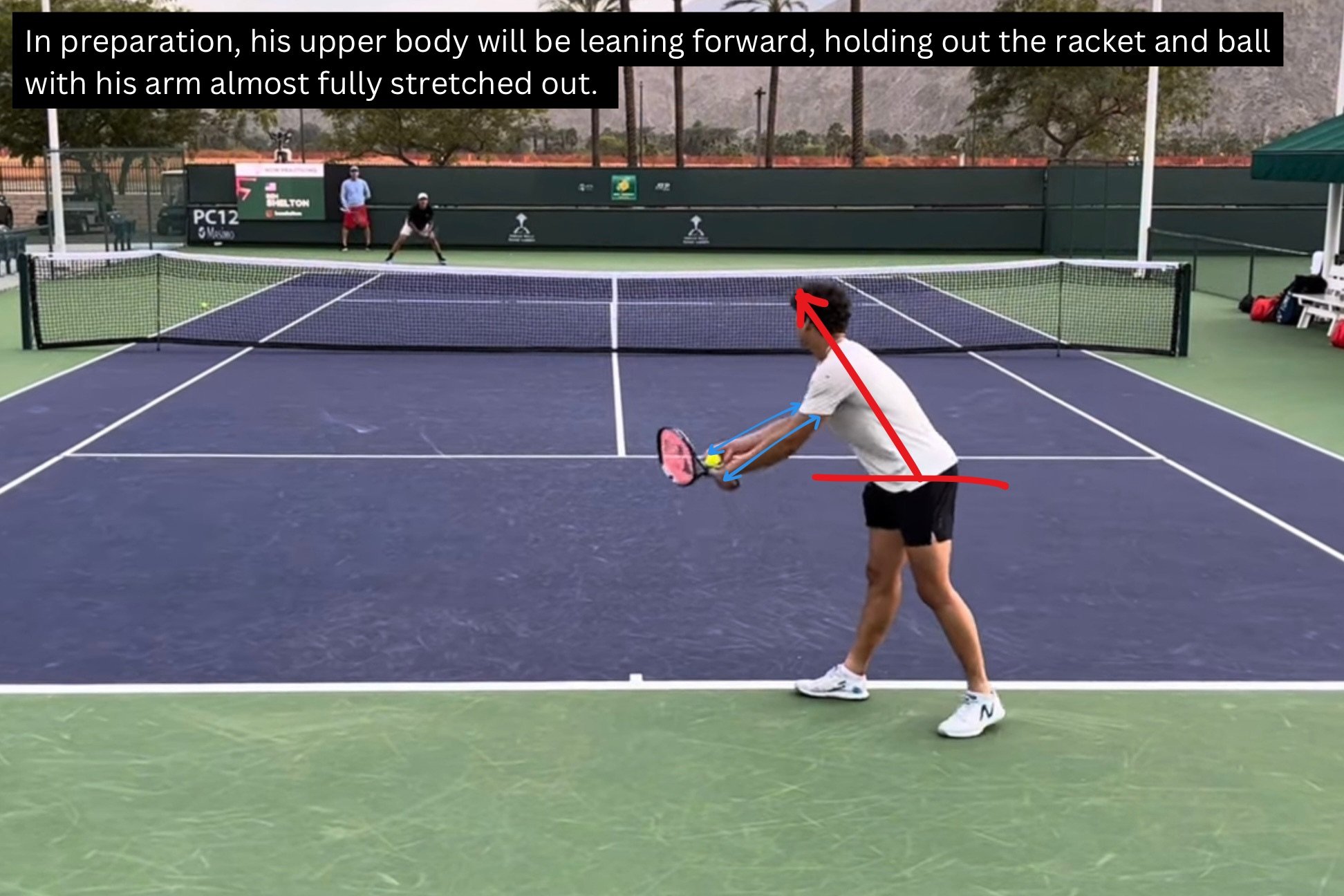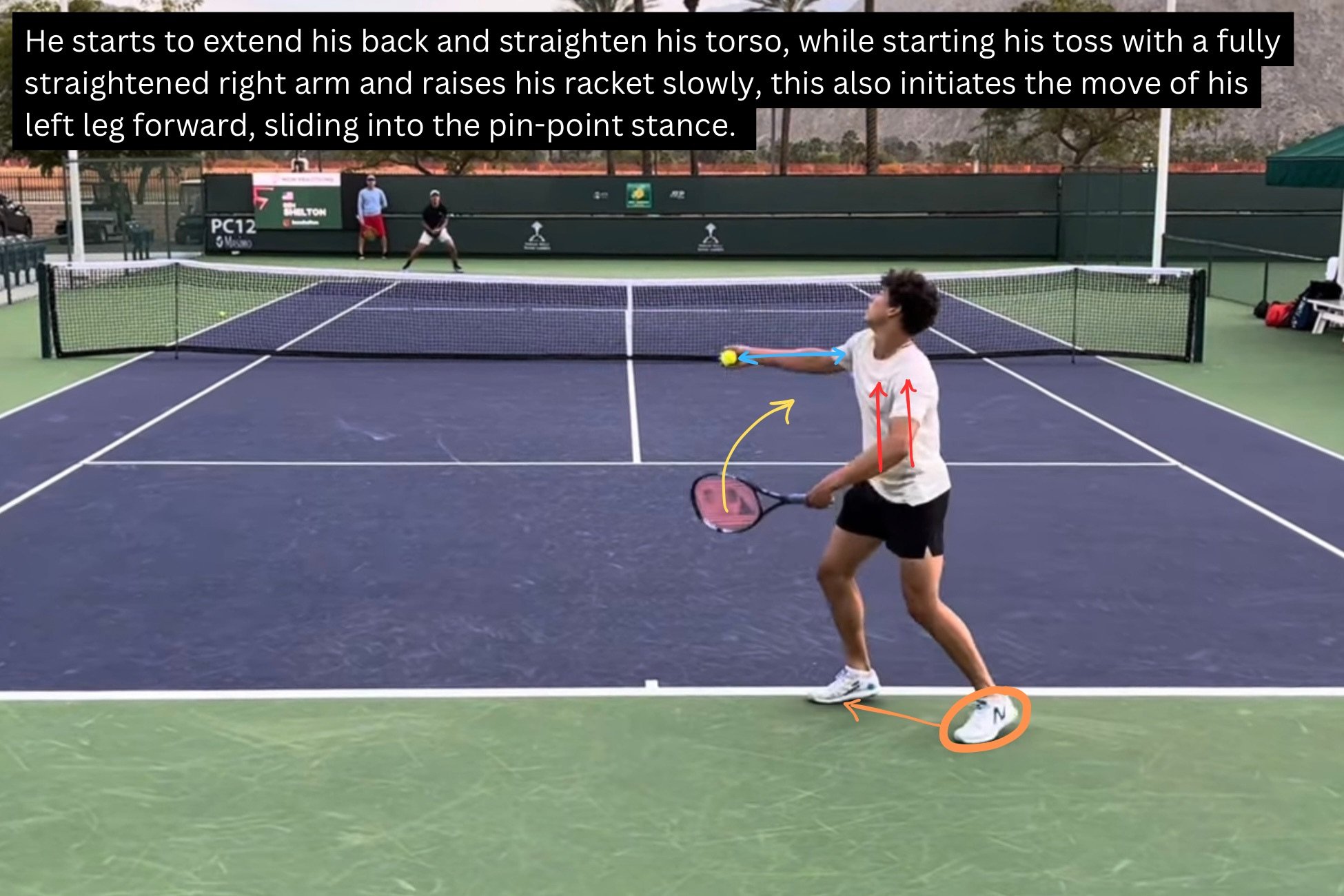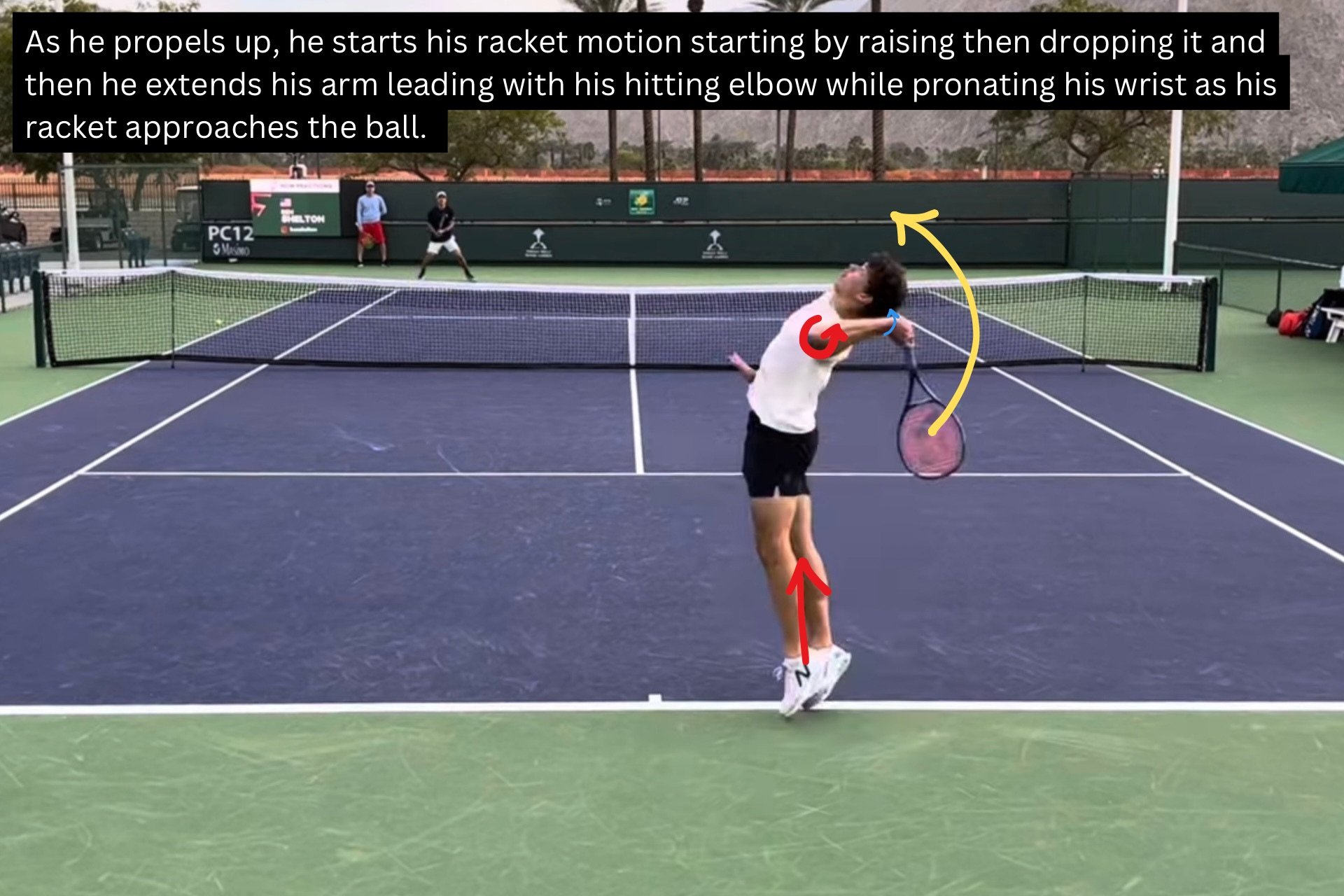How Ben Shelton Can Serve His Way To World Number 1 in 2024
Background
Ben Shelton who hails from Georgia, United States, burst into the tennis scene in 2022 as a 20-year-old and in just a year, he has attained a career-high ranking of number 15, claimed his maiden title at the Tokyo Open 2023 and made deep runs at both the Australian Open and the US Open on debut. Tennis runs deep in his genes as his dad Bryan Shelton who is also his main coach, was a former ATP professional reaching a career-high rank of no. 55, and had won two singles and two doubles titles.
Ben Shelton has a big personality on and off-court. He is a big serving lefty with a mean forehand. The tour has not seen any player like him yet. There is no doubt that his serve is one of the best on tour at the moment. With a well-built physique standing at 6’4”/193 cm and weighing 88 kg, he has already accumulated 539 aces and is winning 76% of his first serves points. His first serves average at about 126 miles per hour (203 km/h).
Tennis Gear
Ben Shelton is also one of two sponsored players from the Roger Federer affiliated brand On Running, in which he dons all of their apparel from daily wear, kits and shoes. He is also a Yonex-sponsored player and his choice of racket is the Ezone 98.
Racket Specifications:
Head Size: 98 sq. in.
Strung weight: 323g
Length: 27”
Swingweight: 318
String pattern: 16×19
Strung Balance: 325mm (6 pts HL)
Dampener: No
The Ezone 98 is also endorsed by Nick Krygios and Naomi Osaka. The racket offers a well-balanced performance and provides more power as compared to his previous frame which was the Yonex Vcore Pro 97D which is a more control-oriented racket. The switch to the Ezone with a wider 16x19 string pattern and a thicker beam gives him the ability to strike the ball with more pace. It seems like Shelton uses the Ezone 98 in stock form without any said modifications with lead tape.
He strings his racket up with a 16 gauge Yonex Poly Tour Strike (1.30mm) on the mains at 60 lbs and the softer 16 gauge Yonex Poly Tour Pro (1.30mm) on the crosses at 57 lbs. Shelton strings his racket at a relatively high tension which gives him enough control with his heavy topspin shots and the powerful Ezone 98. The tension on his racket, like many others on tour, changes slightly according to the climate and weather conditions he is playing in. Also, he does not use a vibration dampener on his racket as he prefers the feel of the racket and stringbed without it.
Overall Playstyle
Ben Shelton has a pretty well-rounded game for a player of his age. His game is simple and straightforward, first-strike tennis; a highly offensive player with a strong serve and big forehand. He has powerful groundstrokes from the back of the court and is confident to move up to the net to volley and kill the short balls whenever the opportunities arise. In addition to the advantage he has as a lefty, he is also able to change the pace of the shots pretty well putting balls in awkward positions with varying speed making it tricky for his opponents to receive.
Shelton’s game is still developing and is slightly behind the likes of his peers like Carlos Alcaraz, Holger Rune and Jannik Sinner. His stroke mechanics are well-developed on both wings and his serve in particular is above his peers. Another notable aspect is his mentality on and off-court. He is well-articulated and mature off-court but also has a big fun personality which brings energy to the crowd.
He uses the semi-western grip on his left-handed forehand which allows him to generate topspin and still drive his shots with pace. He also uses a standard continental grip on his left hand with an eastern grip on his right hand (top hand) for his two-handed backhand.
The lefty has an ultra-reliable forehand and oftentimes prefers to run around his backhand to hit his forehand like many other players in the modern game. His backhand, though reliable, has still more to be desired; however, he mixes in the slice well on that wing, an advantage a lefty player has, as it can throw the opponent off-guard due to the difference in direction of the backspin on the ball.
Shelton is young and has a long career ahead of him. There are a couple of aspects of his game that can be further developed in the long run, including the return of serves and his movement on the court. One major flaw that will slow Shelton down in gaining even greater success is his movement and recovering positions. He often relies on his athleticism and speed to cover the court, and he does not maximize his movement with sliding and does not recover his position as well as other players, giving his opponents chances to exploit those spaces on the court.
Serve
There is no doubt he is going to be one of the best tennis players in the coming years, with the one stand-out aspect of his game being his piercing lefty serve. Shelton’s serve is unorthodox and unique like no other. The only other player that we can draw similarities from is his fellow American, Andy Roddick, who was also known for his wicked serve when he was playing.
Their serves are similar in terms of their trophy position and the quickness of their movement to contact the ball. Otherwise, it is completely different from their stance, winding up motion, loading and landing.
This is a breakdown of the service motion that may bring him to the top of the men’s tennis:
Starting at the baseline, he will position his right foot about 30° towards the baseline with his left foot (heel not touching the ground) about shoulder width behind his right foot before his winding up motion.
At this stage his upper body will be leaning forward, holding out the racket and ball with his arm almost fully stretched out.
Starting his wind-up motion, he starts to shift his weight backwards, his left leg bending and his right extends
He then starts to extend his back and straighten his torso, while starting his toss with a fully straightened right arm and raises his racket slowly.
He tosses the ball up with his tossing arm fully extended, this also initiates the move of his left leg forward, sliding into the pin-point stance.
He then loads his legs to an almost 90-degree angle with his tossing arm fully extended; the loading is so extreme that he is leaning with a huge arch on his back when he is fully loaded.
In the trophy position, his racket is low at about chest height for maximum racket lag before launching at the ball.
He relaxes his legs and starts to push down on the ground like a spring, then starts to pull his body and chest upwards while his tossing arm starts to come down towards his body.
As he propels up, he starts his racket motion by raising then dropping it and then he extends his arm leading with his hitting elbow while pronating his wrist as his racket approaches the ball.
His arm will be fully extended as the racket makes contact with the ball (the racket on contact is not straight). He also makes sure to fully uncoil putting all the energy he generates from the ground up into the serve, utilising the full kinetic chain.
He follows through the serve across his body (except for the kick serve) and lands in the court with his right foot while the left is up to keep his balance. He will land about 30cm into the court while facing the net.
He then readies himself to receive the return if any.
Shelton’s serve is so complex and detailed and it is definitely not one that a recreational player should try to recreate or imitate. It is so taxing on the body and encompasses too many small details that may take years to develop to even get to how he is serving at the moment.
It is important to note that there are areas of Shelton's service motion that may lead to serious injuries that may hinder his career in the long run. The extreme extension and thrust on his hips and back may lead to injuries in both areas due to the pressure put on them. Also, the motion that pushes his shoulders down in his trophy position may also cause problems in the long run. Though such extreme motions aids in generating pace for his serves, it may not be ideal if he wants a long lasting career. Nevertheless, it currently does not pose a jarring threat and works well at his age. We won’t be surprised if he starts to make changes to his service motion in years to come to alleviate some of these issues.
Shelton plays high risk tennis and relies a lot on pure speed and the spin he has in his game. As such, he goes all out on both his first and second serve, he does not hold back on his second although it tends to be a “slower” kick serve.
He hits a good number of aces each game, and with the advantage he has as a lefty and a well built physique. He makes it so hard for his opponents to read and return his serves. He is picking up some serious wins on faster surfaces. He may be able to serve his way to the top of the game in 2024 if he remains consistent while working to improve other areas of his game. Ben Shelton is a truly exciting player to watch!










